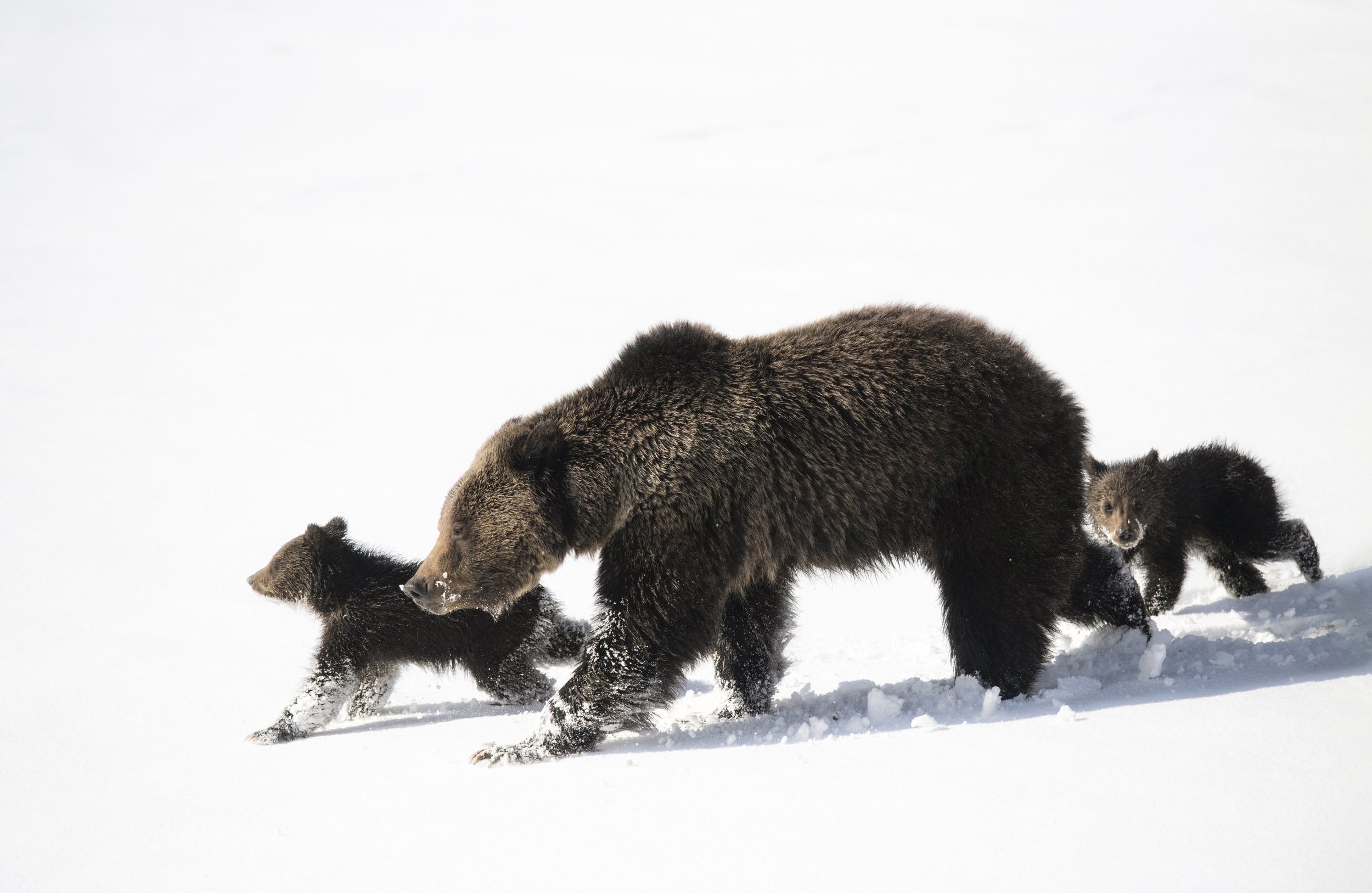The Grizzly Bear
(Ursus arctos horribilis) is a keystone species in the Greater Yellowstone Ecosystem. A critical piece of a complex web of life, grizzlies play many important roles within the larger ecosystem. These omnivores create some of the most highly-desired wildlife viewing and photography opportunities in the world.

Did you know?
Female grizzlies weigh between 300-400 pounds, and males can weigh up to 800.
They’re often recognizable by three key features: a prominent shoulder hump, long, straight claws, and a concave, dished face.
Grizzlies can run up to 30 miles per hour and can lift over 1,100 pounds.
Grizzlies usually live from 20-25 years, but the oldest bear documented in Yellowstone was believed to be 34.
When bears are in hyperphagia — eating in preparation for hibernation — they can consume up to 20,000 calories per day and gain up to 30 pounds per week.
Two of the four traditional foods that grizzlies rely on have been seriously impacted by climate change, and a third is vulnerable, meaning bears now have to travel further to find enough to eat.
Whitebark Pine is functionally extinct in many areas of the GYE due to beetle infestations and blister rust, and the bears no longer get the benefit of this high-fat, high-protein food to fatten up before hibernation.
Cutthroat Trout have been almost completely displaced by invasive lake trout which dwell deeper than cutthroat trout and so are no longer available as a food source.
Army cutworm moths thrive on certain high-altitude plants; as higher elevations see shorter winters and warmer summers, conditions become more difficult for those plants.
For now, elk – the grizzlies’ fourth critical food source – are abundant in the GYE. However, it is only a matter of time before Chronic Wasting Disease is discovered in these herds. It’s unknown how the disease will impact these elk, but a large-scale die-off could spell further challenges for grizzlies.

